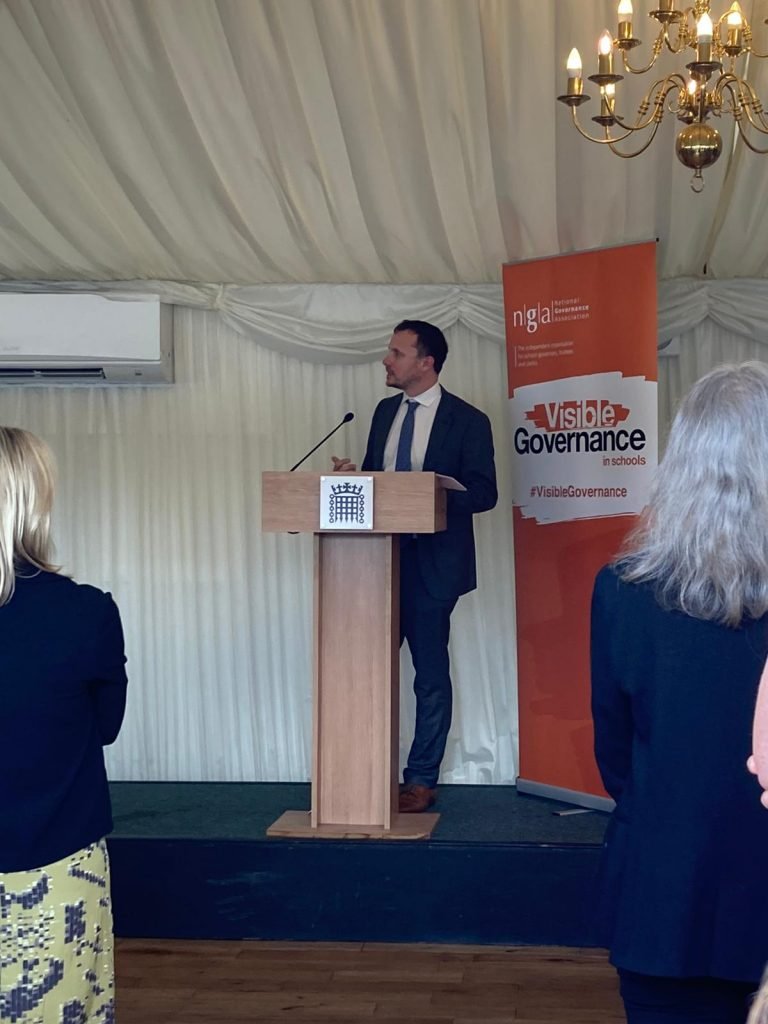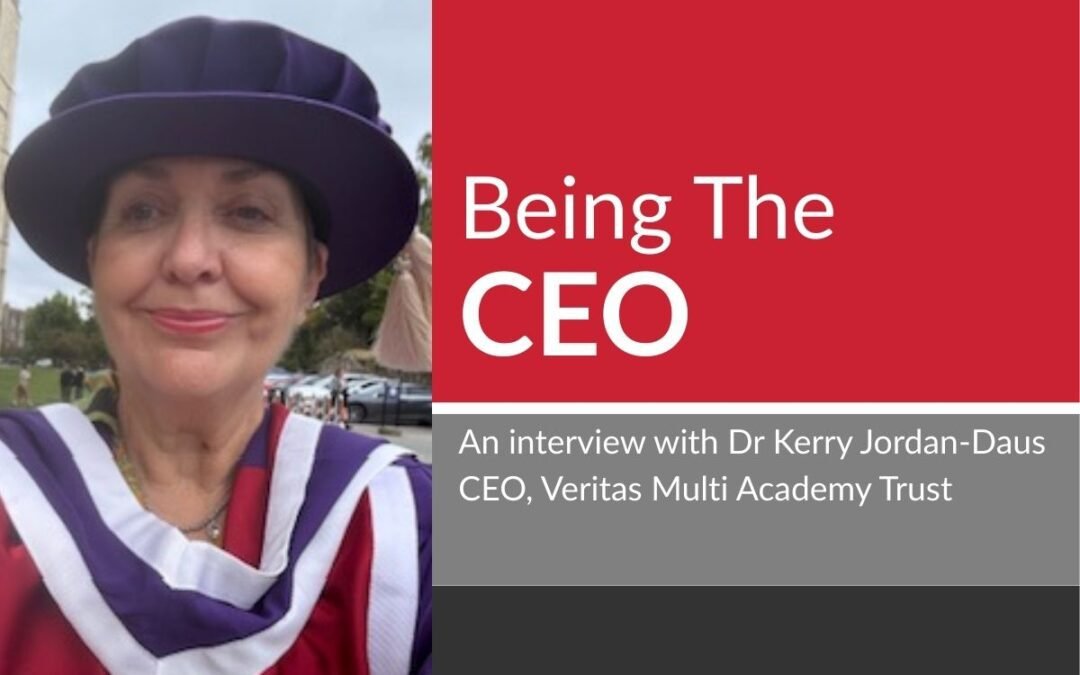Michael Pain gave a keynote speech at the National Governance Awards, calling on governing boards to embody and be accountable for the change that young people and communities wish to see. He covered the themes of diversity and inclusion, sustainability, and digital leadership.
Governance is leadership
Michael Pain, CEO of Forum Strategy, Speech to the National Governance Awards. House of Commons, 9th September 2021.

Good afternoon, and what a privilege it has been to attend this event and to see excellent governance across a wide variety of settings and contexts recognised.
My congratulations to all the award winners, and to all shortlisted today. My thanks also to the National Governance Association – how fortunate we are as a sector to benefit from this wonderful organisation advocating for and supporting good governance. Let’s acknowledge Emma Knights, Sam Henson and all the fantastic team who made today happen.
Days like today are so important, not only because they highlight the work of people like yourselves, who are demonstrating what exceptional governance looks like, and ensuring it is showcased across the sector; but because these events also help to recognise more broadly the sheer commitment and social capital represented by governance in this country. I think in terms of volunteerism – the giving of time, effort and expertise; the work of governing boards in England’s schools is unmatched anywhere in the world. Where would we be without it? This is something we can never take for granted. So, thank you.
Now for many years our education system has depended on you in order to function; however, in the last decade with the growth of trusts and academies it depends on you for much more than that – the premium on the vision and strategic leadership of governing boards has never been greater.
And it is boards’ role in shaping and directing the next era that I want to talk about today.
Today I want to talk about Governance as leadership. This is about governance that embodies the change we wish to see – and crucially, the change that young people and communities wish to see embodied in the organisations that serve them.
I want to talk about why we are at a turning point in our society, and therefore for our education system and the role of governance within that.
Our trusts and schools are about to face the opportunities and challenges of a generation. Whilst they’ve proven themselves great in a crisis – and there has been some amazing work during the pandemic – big strategic challenges and expectations and an era of huge complexity, now await us. The biggest test, adapting and shaping organisations that prepare and empower young people for a very different world, is happening right now. The priorities you set and decisions you take as governing boards will be defining. For some that will be exciting moment to seize, for some if will be overwhelming, for others, I’m afraid, these issues are passing them by.
I’m reminded of this saying
“indecision is a decision, inaction is an action, and both action and inaction have consequences.”
Meeting these strategic shifts will depend enormously on the foresight, capacity, ingenuity and agility of governing boards everywhere. Your ability to do something in response to the context we – and more importantly young people – find ourselves in, will matter.
So what are these strategic shifts?
Today I wish to cover three key themes, though there are others too.
Diversity and inclusion
Sustainability
And
Digital leadership
All of these are defining issues for this generation of children and young people, and for the organisations you lead.
So, the first issue,
Diversity and inclusion
The murder of George Floyd and the subsequent Black lives matter movement has shown how much we need to do to tackle inequality and break down invisible barriers. Not least to young people, the people we serve and who look to us for direction. This isn’t simply about good PR or ticking a box, there is a moral imperative to this. There is also an organisational imperative to it.
Last week the Financial Reporting Council, together with London Business School and others found that diverse boards generally make the better decision making. Such boards bring a broader range of perspectives, experiences, and awareness of context.
So the report underlines that diversity in governance is not only a moral imperative for us, a demonstration to young people and staff of all backgrounds that they too can have a stake in society and can see themselves in their leaders, but also the key to even better and more effective governance too.
There’s a long way to go on this across the board..
According to new analysis by Green Park this Summer
In the FTSE 100, just 12% of the top roles go to women
For the first time since this analysis began, there are no Black Chairs, CEOs, or CFOs in the FTSE 100.
Now where do we stand in the trust sector?
I think on gender we probably do better, but not brilliantly. On ethnicity, I think we do poorly too.
The unbelievable thing is that as at the senior level of the trust system, we don’t seem to know or really ask the question of ourselves – which is astounding!
The first thing we have to do in order to ensure better diversity and representation is to monitor it as a sector and as individual organisations exactly how we are doing – benchmarked against others.
At Forum Strategy we want to make a start. That is why last month we launched the first of its kind research into diversity and inclusion at executive level in the trust sector. We want to open up that conversation.
However, we also need boards everywhere – as leaders – to be doing the same thing. Demonstrating to young people and their communities that they too are asking the hard questions of themselves and doing everything int heir power to be more representative and inclusive.
The FRC report said that:
- It is the responsibility of the Chair of a board to drive inclusion.
- Regulators and companies must focus on collecting more data on the types of diversity, board dynamics and social inclusion
- building and maintaining diversity requires proactive planning, concrete actions and consistent prioritisation. Everything must be considered from recruitment through to induction, the delivery and accessibility of meetings.
- diversity is a long-term, multi-stranded journey where progress in one area is not a guarantee of progress in another
So I ask
Are you monitoring and measuring diversity and inclusion in your trust? Is there a strategy for delivering it? Are all governance policies and practices reviewed and considered in light of it?
As a board, as the employers in your trust and the guardians of the vision, are you embodying the change we – and children and young people and their communities – need to see.
This is about leadership, taking the initiative and not waiting for or following others.
Sustainability
This Summer the Intergovernmental Panel on Climate Change has published its latest report, which finds that scientists are observing changes in the Earth’s climate in every region and across the whole climate system. The report provides new estimates of the chances of crossing the global warming level of 1.5°C in the next decades, and finds that unless there are immediate, rapid, and large-scale reductions in greenhouse gas emissions, limiting warming to close to 1.5°C or even 2°C will be beyond reach.
For children and young people this is a huge issue, this is their future and their children’s futures. It is something they care deeply about and that in fact produces enormous anxiety for many. This Summer Place2Be – a charity offering counselling in schools – said the issue was becoming “more and more prominent”. The organisation said that climate anxiety was brought about by a sense that politicians and big business were not acting quickly enough.
Yet as organisations across the economy set carbon neutral goals and targets, embed sustainability commitments, and invest, where are we as an education system?
I am still very concerned by the lack of trusts and schools that have neither a strategy or any goals in this area yet? Despite the fact this matters to young people. There are a small number of fantastic examples where this is not the case, trusts forging ahead on sustainability – not least in this room today, but we need much more leadership here.
Again, as with diversity – there is a moral imperative but there is also an organisational imperative too. A more energy efficient estate and working practices – especially when considering a trust of multiple schools across geographical areas – can also bring big financial savings too.
But there needs to be an investment – in time, energy and resources, in the short to medium term to make this happen.
Again, how can boards embody the change that young people wish to see in the world? Are we leading or are we waiting for someone on high to tell us what to do?
And finally,
Digital leadership
Digital has links to the previous two areas because in governance because it can make boards more accessible and widen participation to other demographics, and it can help avoid unnecessary travel between sites.
However, it is key that we make the shift to a digital education system – for ourselves and for young people – as thoughtfully and carefully as possible.
In June, UNICEF published a report setting out its concerns about the growing digital divide in this country, and particularly for children and young people. As a starting point, it found that 8% of children aged 5-15 do not have access to an internet enabled desktop computer, laptop, or netbook at home. This means in a world where substantial amounts of education have been delivered through the internet, thousands of our children and young people have been excluded at the first hurdle.
Now, it’s clear that the government gets and understands this and is trying to get equipment to all those without it; however, access to technology – having a laptop or tablet in hand – is only the beginning of this complex and defining issue.
As the UNICEF report recognises, bridging the digital divide is also about ensuring the skills and support (for teachers and pupils) and a safe online environment. Indeed, three years ago, the former Children’s Commissioner was telling us “at the moment, children are not being equipped with adequate skills to negotiate their lives online. Offline, adults should aim not just to ‘educate’ children as they grow up, but to help them develop resilience and the ability to interact critically with the world; recognising that without these ‘softer’ skills, they cannot grow up as agents of their own lives.”
On the whole, the pandemic has done little to change that, but it has ramped up the urgency and presents us with some big strategic implications that have a direct bearing on trust and school leadership, going beyond just getting a device into the hands of pupils.
At Forum Strategy we have long talked about the ‘have and have nots’ of this generation of pupils not simply being defined by issues such as poverty or lack of qualifications, but also whether they are masters or servants of technology. Even with technology in their hands, are pupils safe using it? Are they using technology to broaden their horizons, to create, and to enhance their learning and knowledge? Or are they the ‘mere addicts’ of technology, scrolling through a world of mis-information, feeling pressure from superficial ‘influencers’, and tapping into social media into the early hours – affecting their sleep and concentration as a result. As a report from Natterhub this Summer found, the use of technology is now woven across children’s lives – over 70% of children chose ‘messaging’, ‘gaming’ and ‘streaming’ as the best way to chat to friends; with just 23% choosing an offline option.
So we need boards to be putting digital literacy and the safe and impactful use of technology at the top of the agenda too. Are you monitoring accessibility? Are you monitoring and ensuring the safety of pupils and staff? Are you ensuring that technology is enhancing learning and investing wisely so that pupils are resilient and equipped to deal with the risks? Are you modelling positive and purposeful use of tech as a board?
As with diversity and sustainability, this is a complex challenge; however, the emphasis, commitment and investment in getting this crucial – defining – issue right, begins with boards.
Embodying safe, creative, and purposeful use of technology?
Are you leading, or are you waiting or following?
I want to end with this
On these issues and others – there is no government strategy.
There is a growing trend amongst the public to expect large organisations and their leaders to lead the way on these issues. They want you to do this, not wait for government. Trustees, executives, and senior leaders who have the power to drive change in your hands.
In 2019, a small and subtle change was made to the Companies Act, particularly duty to promote the success of the company
The duty states that
“When making decisions, directors must consider the likely consequences for various stakeholders, including employees, suppliers, customers and communities. They should also consider the impact on the environment, the reputation of the company, company success in the longer term and all of the shareholders (including minority shareholders).” Company Law
A a new reporting requirement means that larger companies (with more than 250 employees) will have to explain how they have fulfilled this duty in their annual report.
It is important that boards proactively recognise what is important to them and their communities, and make themselves accountable for that – directly to communities themselves, going beyond nationally, but narrow, top down measures of success.
Indeed, communities are increasing expect to hold boards and leaders to hold themselves to account on these issues; and the best, most-forward looking and strategic boards will already know this. They will be listening and they will be forging ahead, reporting to their communities as they do so. This new ‘pure accountability’ – being directly accountable to those we serve in our communities – is something we have been championing and discussing for some time at Forum Strategy: PURE ACCOUNTABILITY: An accountability vacuum? Let’s shape a purer, more community-focused alternative.
The best boards won’t be waiting for a government minister or a bureaucrat to tell them all of this matters.
This is Governance as Leadership
As some of the most accomplished boards in the country I know you will recognise all of this, many of you will be doing something about it.
When the people who know, care for, and believe in their communities empower themselves to make a difference – on the issues that matter to children and young people – and ensure they are held to account for it by those communities, anything is possible.
I want to end with this quote from Charles Handy:
“We cannot wait for great visions from ‘great’ people, for they are at short supply at the end of history. It is up to us to light our small fires in the darkness.”
Charles Handy, the Empty Raincoat
Thank you


